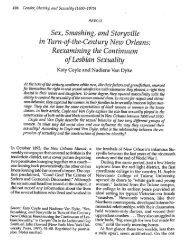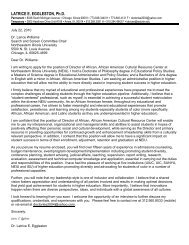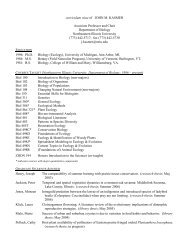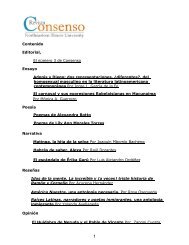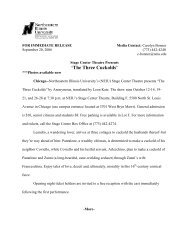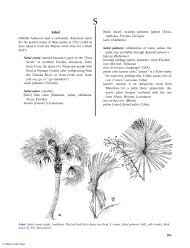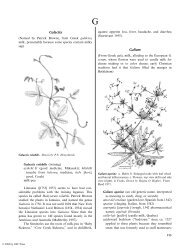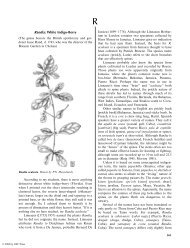Herba Cana - Northeastern Illinois University
Herba Cana - Northeastern Illinois University
Herba Cana - Northeastern Illinois University
Create successful ePaper yourself
Turn your PDF publications into a flip-book with our unique Google optimized e-Paper software.
© 2004 by CRC Press<br />
The Ethnobotany 489<br />
Pentalinon luteum. a. Flowering branch. b. Node. c. Flower<br />
tube, longitudinally dissected. d. Floral diagram. e. Fruits.<br />
f. Seed with coma. g. Seed. Drawn by Priscilla Fawcett. From<br />
Correll and Correll 1982.<br />
Pentalinon luteum (yellow) ( /Urechites lutea)<br />
[bejuco] ahoga vaca (cow strangler [vine], Dominican<br />
Republic)<br />
barbeiro amarillo (yellow beard, Puerto Rico)<br />
bejuco marrullero (false? climber, Cuba)<br />
Catesby’s vine (Bahamas)<br />
clavelitos (little carnation, Cuba)<br />
corne cabrits (goat horn, Haiti)<br />
curamagüey (Taino?, Hispaniola)<br />
Dominican viper tail (Dominican Republic); hammock<br />
viper’s tail [viperstail] (Florida)<br />
Jamaica nightshade (Jamaica); yellow nightshade<br />
(Jamaica?); nightshade (Cayman Islands)<br />
wild allamanda (Florida)<br />
wild unction (unction /ointment, Bahamas)<br />
Linnaeus ([1753] 1957) called these climbers Vinca<br />
lutea. Then, for many decades, they were called<br />
Urechites lutea, a genus established in 1860 by the<br />
Swiss botanist Johannes Müller of Aargau. However,<br />
Bruce Hansen realized that Pentalinon, described from<br />
plants grown in the Calcutta Botanical Garden in<br />
1845, was an earlier and valid generic name (Hansen<br />
and Wunderlin 1986). Pentalinon now contains two<br />
species, both native to Florida, Central America, and<br />
the Caribbean.<br />
In the Dominican Republic Pentalinon is used to<br />
treat heart disease (cardiotonic), edema, fever, and<br />
colic, and as a purgative (Hocking 1997). Plants are<br />
used to treat headache in Guatemala (Rosatti 1989).<br />
However, doing so is dangerous because the latex is<br />
poisonous, having been used to poison arrows in<br />
tropical countries (Rosatti 1989). It is poisonous to<br />
cattle; people powder the leaves to kill destructive<br />
insects and animals (ants, dogs) (Liogier 1974).<br />
Among the poisonous compounds are the cardenolides<br />
oleandrin, urechitin, and urechitoxin (Gibbs<br />
1974).<br />
Penthorum<br />
(From Greek pente, five, and horos, a column or pillar,<br />
referring to the five-parted flowers)<br />
Penthorum sedoides. a. Top of plant. b. Part of procumbent<br />
stem of plant with roots. c. Cluster of flowers and fruits.<br />
Drawn by Vivian Frazier. From Correll and Correll 1972.<br />
Penthorum sedoides (like Sedum)<br />
[ditch, Virginia] stonecrop (from Old English<br />
stáncrop, combining ‘‘stone,’’ a rock, and





